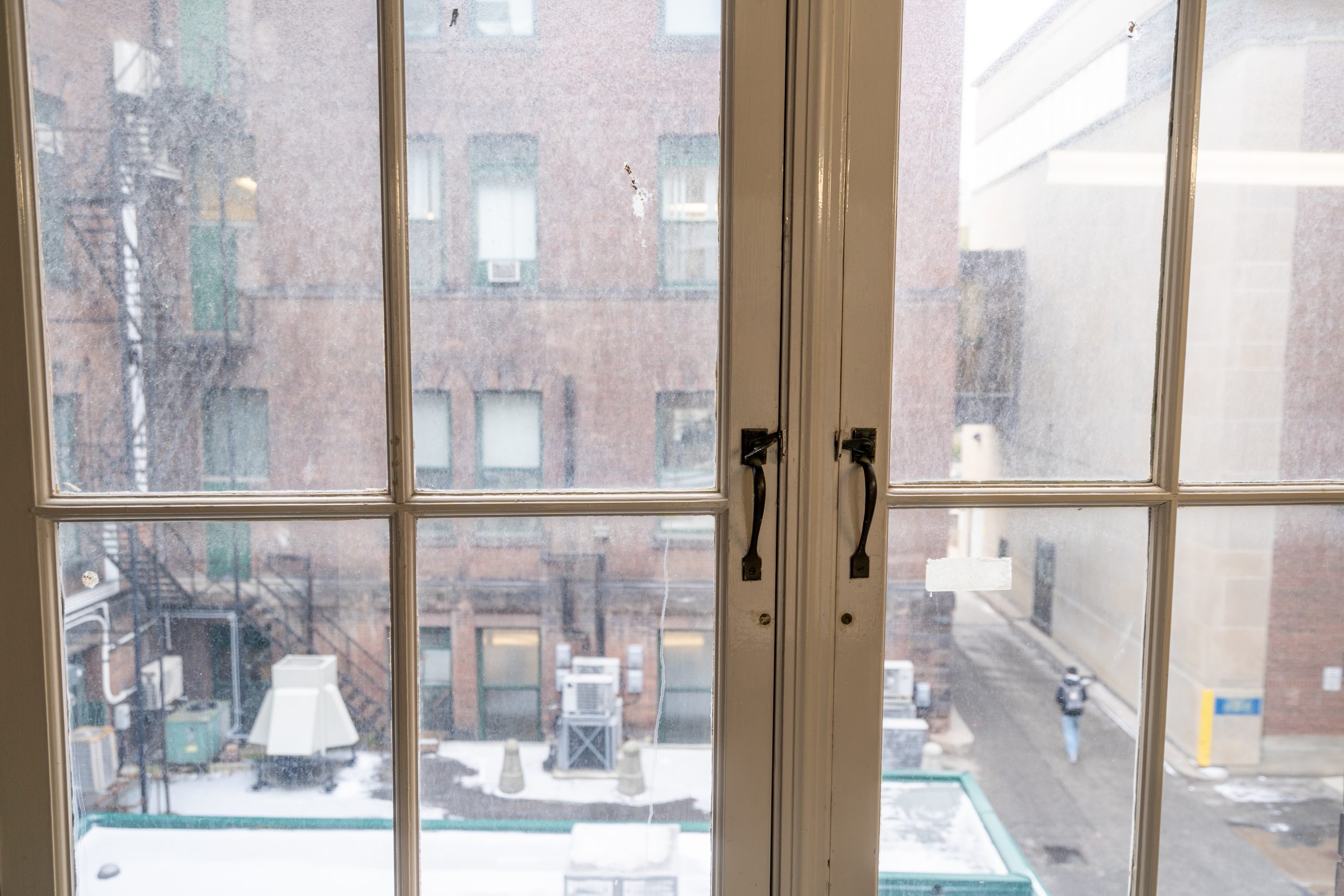Five ways to stay warm and conserve energy this winter
Winter has taken hold across the University of Toronto, bringing colder temperatures and higher energy demands. By adopting simple yet effective practices, everyone can contribute to a more comfortable and sustainable season. From the Facilities & Services team, here are five top tips to help keep your spaces cozy and energy-efficient.

1. Keep windows and doors closed
Frozen pipes are a major winter hazard, often leading to flooding and costly damage. One common cause? Open windows. When temperatures drop, heating systems work tirelessly to maintain warmth. Opening a window to regulate heat may seem like a small change, but exposing pipes to cold air increases their risk of becoming frozen, which can burst and cause leaks, flooding and structural damage on campus. Fire sprinklers and other emergency systems are also vulnerable to freezing. Keeping windows closed during cold spells isn’t about staying warm- it helps prevent serious problems.
2. Avoid using automatic doors if possible
Automatic doors are essential to ensure accessibility, but if accessibility is not a concern—opt for manual doors. Automatic doors are generally open longer, allowing cold air to rush in and forcing heating systems to work harder, increasing energy consumption. Choosing a manual door, if possible, helps reduce energy consumption and maintain a stable indoor temperature.
3. Use blinds effectively
Sunlight is a free and effective heat source! Taking full advantage of natural sunlight can be an effective and sustainable way to warm your space. On sunny days, open your blinds to let the sun in, and close them when the sun sets to provide an extra layer of insulation against the cold.
4. Layer up instead of cranking the heat
Layering clothing is an age-old technique for keeping warm without overburdening heating systems. Wearing multiple layers traps body heat effectively, allowing you to remain comfortable at lower room temperatures.
5. Report heating issues by submitting a service request
If a space feels too hot or too cold, don’t wait—report the issue by submitting a service request. Fixing heating inefficiencies and irregularities helps maintain comfort, prevent energy waste and avoids bigger problems, like frozen pipes or system malfunctions.
These strategies can help you stay warm, conserve energy and promote sustainability on campus. Together, let us make this winter a season of warmth and smart energy use.
